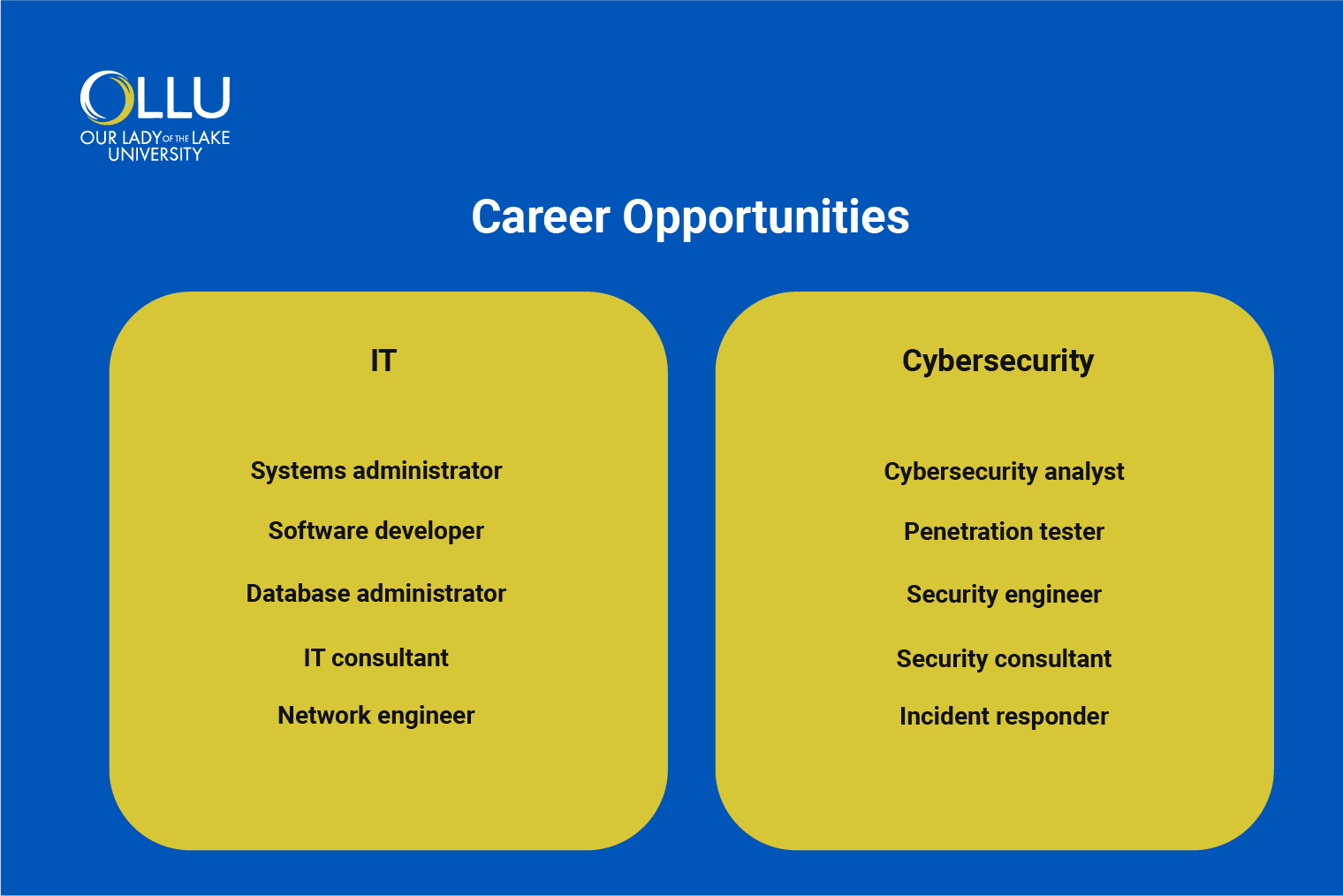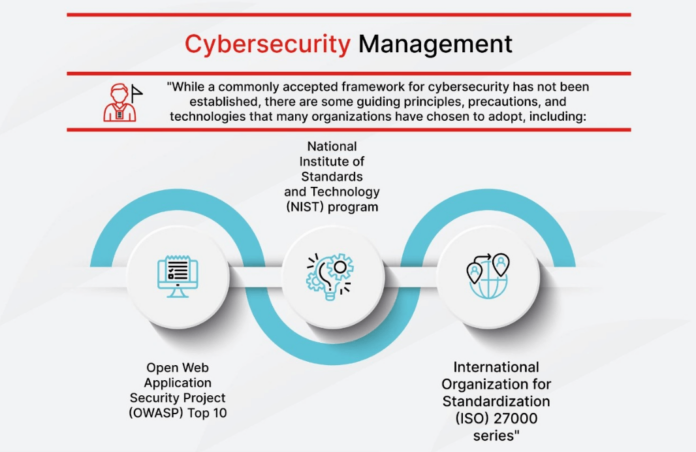Technology has become an integral part of our daily lives, revolutionizing the way we work, communicate, and conduct business. However, with this rapid advancement in technology comes a growing concern for cybersecurity. The interconnected world of IT and cybersecurity is constantly evolving, with new threats emerging every day. This poses a significant challenge for organizations, as they must not only stay ahead of these threats but also ensure the safety and integrity of their vital data and systems. In this article, we will delve into the dynamic landscape of IT and cybersecurity, exploring the ever-shifting nature of threats, the strategies employed to combat them, and the critical importance of a robust and adaptable approach to safeguarding digital assets.
Importance of IT and Cybersecurity Integration
The rise of cyberattacks has highlighted the need for a strong integration between IT and cybersecurity. It is no longer enough for organizations to have separate teams handling these two crucial aspects. The convergence of IT and cybersecurity has become imperative to keep up with the changing threat landscape.
One of the key benefits of integrating IT and cybersecurity is improved visibility and control over an organization’s network. With IT and cybersecurity working in tandem, it becomes easier to identify potential vulnerabilities and mitigate them before they can be exploited by attackers. Moreover, integration allows for a more streamlined response to cyber incidents, minimizing the damage caused by a potential breach.
Another essential aspect of integration is the alignment of IT and cybersecurity goals. Often, these two departments operate with different objectives, which can result in conflicting strategies. By bringing them together, organizations can ensure that their efforts are coordinated and focused towards a common goal – protecting their digital assets.
The Role of Collaboration and Communication
Effective collaboration and communication are key components of successful integration between IT and cybersecurity. It is crucial for both teams to have a mutual understanding of each other’s roles and responsibilities. This enables them to work together seamlessly and act swiftly in the face of a cyber threat.
In addition, regular communication between IT and cybersecurity teams is vital to stay updated on potential risks and vulnerabilities. This allows for timely detection and remediation of any issues, minimizing the impact of an attack.
Emerging Cyber Threats and How to Combat Them

The ever-evolving nature of cyber threats makes it challenging for organizations to keep up. Attackers are continuously finding new ways to exploit vulnerabilities, making it essential for businesses to be proactive in their defense strategies. Let’s take a look at some of the top emerging cyber threats and how they can be combated.
Advanced Persistent Threats (APTs)
Advanced Persistent Threats (APTs) are sophisticated attacks that are specifically targeted at high-value assets or individuals. These attacks are often carried out by well-funded groups, including nation-states, with a malicious intent. APTs are designed to remain undetected for extended periods, allowing attackers to gain long-term access to an organization’s network.
To combat APTs, organizations must adopt a multi-layered approach to cybersecurity. This includes implementing advanced threat detection tools, regular vulnerability assessments, and user behavior analytics. Furthermore, it is crucial to have strict access controls and regular security training for employees to prevent social engineering tactics used by APTs.
Ransomware Attacks
Ransomware attacks have become increasingly prevalent in recent years, causing significant financial losses for organizations. In a ransomware attack, criminals use malware to encrypt an organization’s data, making it inaccessible to users. They then demand payment, usually in the form of cryptocurrency, in exchange for the decryption key.
To protect against ransomware attacks, organizations must have robust backup and disaster recovery plans in place. This ensures that even if data is encrypted, it can be restored from backups without having to pay the ransom. Regular software updates, employee training, and using reputable anti-malware and anti-ransomware tools can also help prevent ransomware attacks.
Best Practices for Data Protection and Privacy
With the increasing number of cyber threats, data protection and privacy have become critical concerns for organizations. The consequences of a data breach can be severe, resulting in financial losses, damage to reputation, and legal ramifications. Here are some best practices for protecting an organization’s data and ensuring privacy.
Encryption
Encryption is one of the most effective ways to secure sensitive data. It involves converting data into a code, making it unreadable to anyone who does not have the decryption key. This ensures that even if an attacker gains access to the data, they will not be able to decipher it.
Organizations should implement encryption across all their devices and networks, including laptops, mobile phones, and cloud storage. This protects data both at rest and in transit, preventing unauthorized access.
Data Backup and Disaster Recovery Plans
Regular data backups are crucial for combating cyber threats like ransomware attacks. In addition to this, having a solid disaster recovery plan in place ensures that even in the event of a cyber incident, business operations can continue with minimal disruption. Backups should be stored in a secure location, preferably offsite, to protect against physical or cyber threats to the primary data.
Privacy by Design
Privacy by design is a proactive approach to data protection, where privacy considerations are built into the design and development of products and services. This ensures that personal information remains secure throughout its lifecycle, from collection to disposal. It also helps organizations comply with privacy regulations, such as the General Data Protection Regulation (GDPR) and the California Consumer Privacy Act (CCPA).
Role of Artificial Intelligence in Cybersecurity
The rise of artificial intelligence (AI) has brought about significant advancements in the field of cybersecurity. AI-powered tools are being used to detect and respond to cyber threats more effectively than ever before. Let’s take a look at some of the ways AI is being used in cybersecurity.
Predictive Threat Analytics
AI-powered predictive analytics tools can help organizations identify patterns and trends in data that may indicate a potential cyber threat. By analyzing large volumes of data in real-time, these tools can predict and prevent attacks before they occur.
Enhanced User Authentication
Traditional user authentication methods like passwords are becoming increasingly vulnerable to cyberattacks. AI-powered authentication tools, such as biometric and behavioral-based authentication, provide enhanced security by analyzing unique characteristics and behaviors of users.
Automated Incident Response
In the event of a cyber attack, every second counts. AI-powered incident response tools can automate the process of detecting and responding to incidents, significantly reducing response times. This allows for a faster containment of the attack, minimizing the damage caused.
Impact of Cloud Computing on IT Security
The rise of cloud computing has transformed the way businesses store and access their data. With more organizations moving their operations to the cloud, it has become essential to understand the impact of this technology on IT security.
Increased Flexibility and Scalability
One of the significant benefits of cloud computing is its ability to scale up or down according to an organization’s needs. However, this flexibility also creates potential vulnerabilities if not managed correctly. Organizations must have proper access controls in place to ensure that only authorized employees can access sensitive data in the cloud.
Shared Responsibility Model
Cloud service providers follow a shared responsibility model, where the provider is responsible for securing the underlying infrastructure, while the customer is responsible for securing their data and applications. This means that organizations must have robust security measures in place, such as encryption and access controls, to protect their data in the cloud.
Cloud-Based Security Solutions
As more organizations move to the cloud, security solutions tailored specifically for cloud environments have emerged. These solutions offer features such as data encryption, secure access controls, and continuous monitoring, making them an essential aspect of cloud security.
Employee Training and Awareness Programs

Human error remains one of the significant vulnerabilities in an organization’s cybersecurity defenses. Employees are often the first line of defense against cyber threats, making it crucial to educate and train them on best practices for data protection and privacy.
Regular Security Training
Organizations must conduct regular security training for their employees, covering topics such as identifying phishing emails, creating strong passwords, and reporting suspicious activities. This ensures that employees are aware of potential risks and know how to respond in the event of a cyber incident.
Testing Employee Knowledge
Regular testing can provide insights into the effectiveness of employee training programs. Phishing simulations and other social engineering tests can help identify areas where employees may need additional training or support.
Promoting a Culture of Cybersecurity
Creating a culture of cybersecurity within an organization is vital to ensure that employees understand the importance of their role in protecting company data. This can be achieved by recognizing and rewarding employees who demonstrate good security practices and encouraging them to report potential risks.
Implementing Multi-Factor Authentication (MFA)
Multi-Factor Authentication (MFA) is an extra layer of security used to verify a user’s identity. In addition to a password, MFA requires users to provide a second form of identification, such as a fingerprint or a one-time code sent to their mobile device. This adds an extra level of protection against unauthorized access to data and systems.
Types of MFA
There are several types of MFA, including biometric authentication, hardware tokens, software tokens, and SMS-based authentication. Organizations must assess their needs and choose the most appropriate type of MFA based on their requirements and budget.
Advantages of MFA
Implementing MFA provides organizations with increased security, as attackers would need to bypass two or more layers of authentication to gain access to sensitive data. It also reduces the risk of unauthorized access in the event of a data breach, as even if passwords are compromised, the second form of authentication would still be required.
Future Trends in IT and Cybersecurity
As technology continues to advance, so will the methods and techniques used by cybercriminals. Organizations must stay ahead of these evolving threats and embrace new technologies and strategies to strengthen their cybersecurity defenses. Here are some key trends that we can expect to see in the future of IT and cybersecurity.
The Rise of Zero Trust Architecture
Zero Trust Architecture takes the approach of “trust no one” when it comes to network security. It assumes that every user and device is a potential threat until proven otherwise and implements strict access controls and authentication protocols to ensure that only authorized users have access to sensitive data.
Increased Use of Automation and AI
As the volume and complexity of cyber threats increase, automation and AI-based tools will become essential for organizations to detect, analyze, and respond to attacks effectively. These tools can process vast amounts of data in real-time, enabling organizations to respond swiftly to cyber incidents.
Quantum Computing and Cryptography
Quantum computing is set to revolutionize the field of cryptography. While traditional encryption methods rely on mathematical algorithms, quantum computing uses the principles of physics to generate random keys, making them nearly impossible to break.
Conclusion
The ever-evolving landscape of IT and cybersecurity presents significant challenges for organizations. However, with the right strategies and tools in place, businesses can stay ahead of emerging threats and protect their valuable digital assets. By integrating IT and cybersecurity, following best practices for data protection and privacy, and embracing new technologies, organizations can enhance their overall security posture and safeguard themselves against the myriad of threats in the modern digital landscape. It is imperative for businesses to continually reassess and update their security measures to keep up with the rapidly changing threat landscape and stay one step ahead of cybercriminals.
